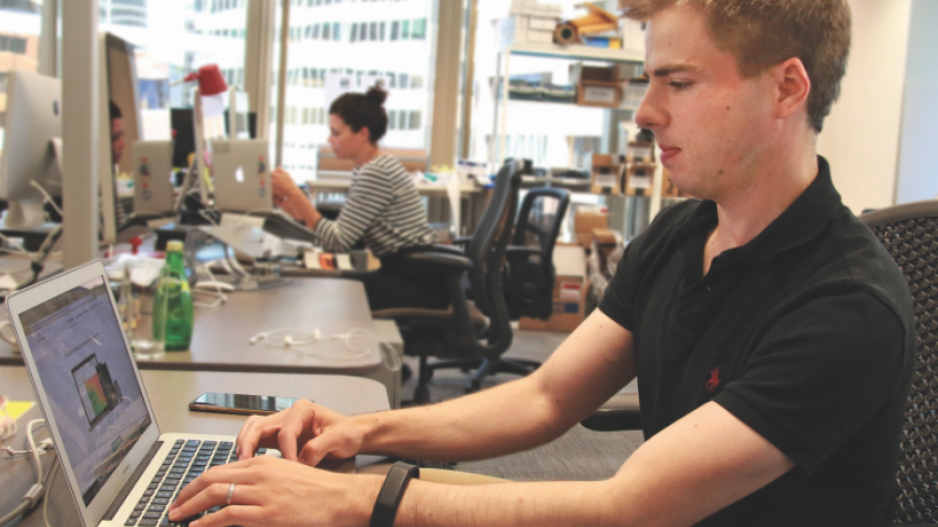Whether miners are using heavy machinery to burrow deep into the earth or oilsands workers are pumping bitumen from the ground, safety managers at those job sites have one main purpose.
“Keep everyone safe. No incidents, no accidents of any type,” said Robert Higdon, director of corporate development at Vancouver-based Fatigue Science.
But it’s often a guessing game when monitoring workers’ levels of fatigue as they log gruelling shifts.
“To be able to understand the difference between just feeling generally tired and being an objective fatigue risk, where your reaction time and your lapsed propensity is similar to that of a drunk driver, that’s really the difference that we’re … shedding light on,” he said.
Fatigue Science has been equipping workers in high-pressure jobs with its Readiband wristband wearable technology to monitor levels of fatigue based on U.S. military research.
The wristband works in a similar way to a Fitbit by analyzing biometrics from its users. But instead of calculating steps walked in a day, the company’s algorithm analyzes those biometrics for signs an employee is at a higher risk of creating a fatigue-related accident.
Managers can monitor the metrics in real time, and the company’s software will alert the employers to any risks.
“You don’t have to wait until you’re reacting but rather can anticipate and intervene proactively,” Higdon said.
Fatigue Science has doubled its head count over the last two years to 40 from 20 workers as it has added clients such as Caterpillar Inc. (NYSE:CAT) and Vancouver-based Arrow Transportation Systems Inc.
Professional sports teams like the Seattle Seahawks and the Chicago Cubs have also used the technology to monitor the sleeping habits of their players to maximize their performance.
And the U.S. military uses the technology to monitor the alertness of some personnel.
The U.S. Army Research Laboratory developed the algorithm Fatigue Science uses to monitor personnel through its software.
But with employers having all that access to biometric data, some employees might object to wearing the Readiband wristband.
“Probably the best way to start the introduction is to have it on a voluntary basis,” said Paula Allen, vice-president of research and integrative solutions at Morneau Shepell.
“It’s in the employee’s interest as well because if there is an accident, they’re going to be involved, they could [risk] their own physical harm.”
Regarding Higdon’s comparison between drunk drivers and fatigued workers, a 2011 WorkSafeBC report cited research that found 17 hours awake is the equivalent to a blood alcohol level of 0.05. That level goes up to 0.1 if someone has been up for 24 to 25 hours.
Jim Hughes, president of Burnaby-based Working Safety Solutions, said he understands concerns about privacy, but most work crews would likely be in favour of such measures.
“It’s like the drug-monitoring thing,” he said. “At the end of the day, the crews really liked it because it kept the guys having problems off.”
Hughes said safety concerns are likely to trump privacy concerns in high-pressure jobs involving heavy machinery.
@reporton



